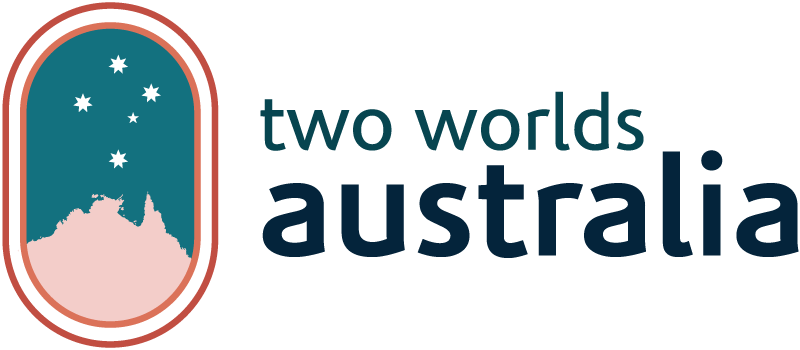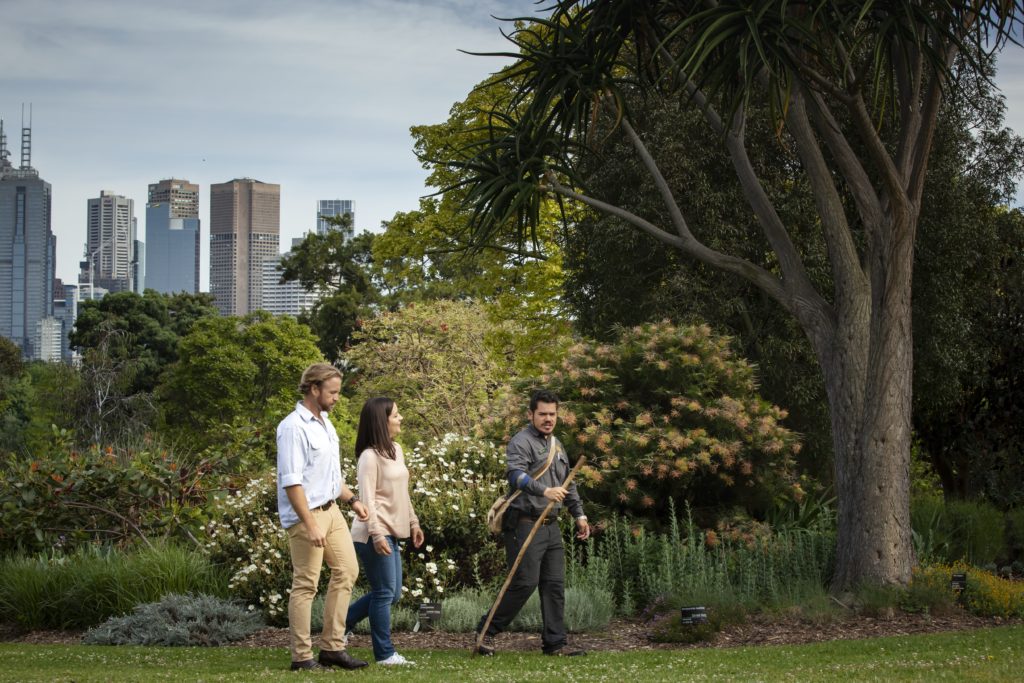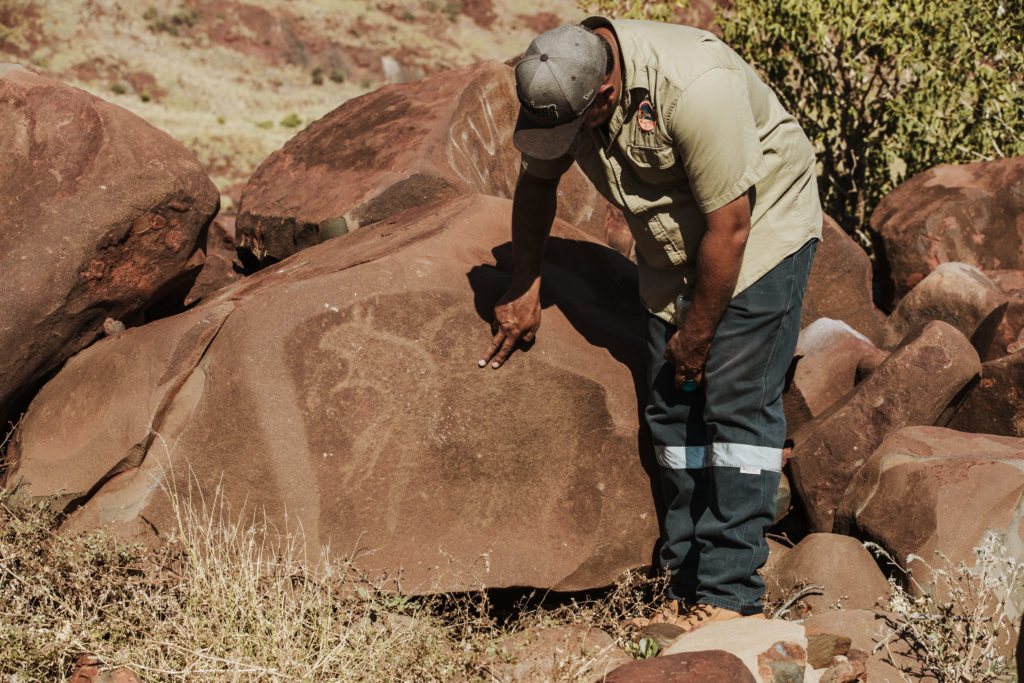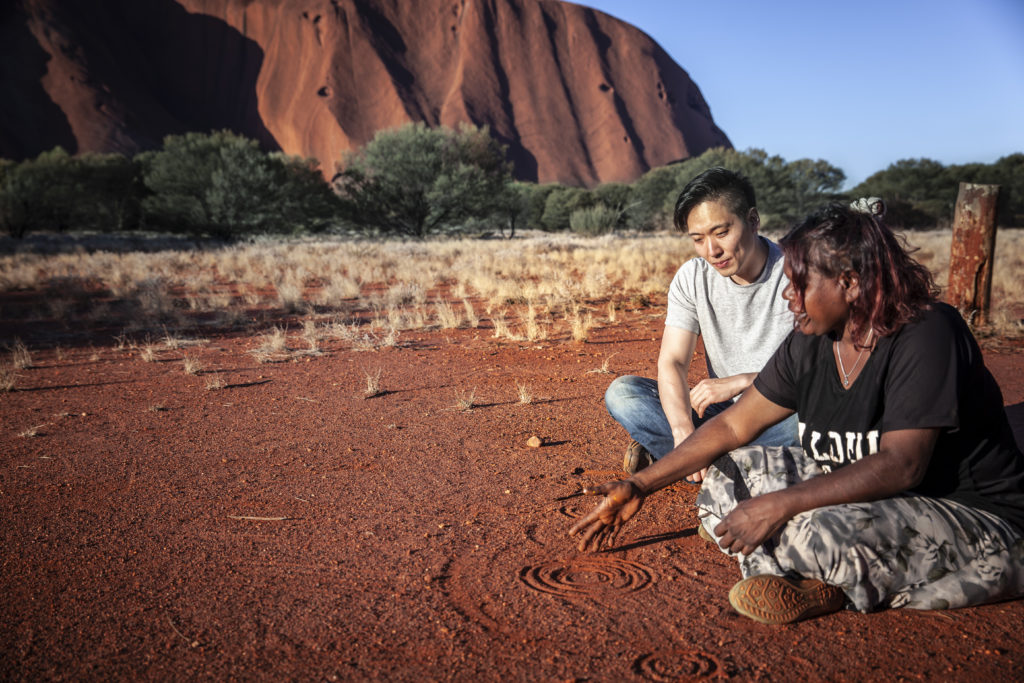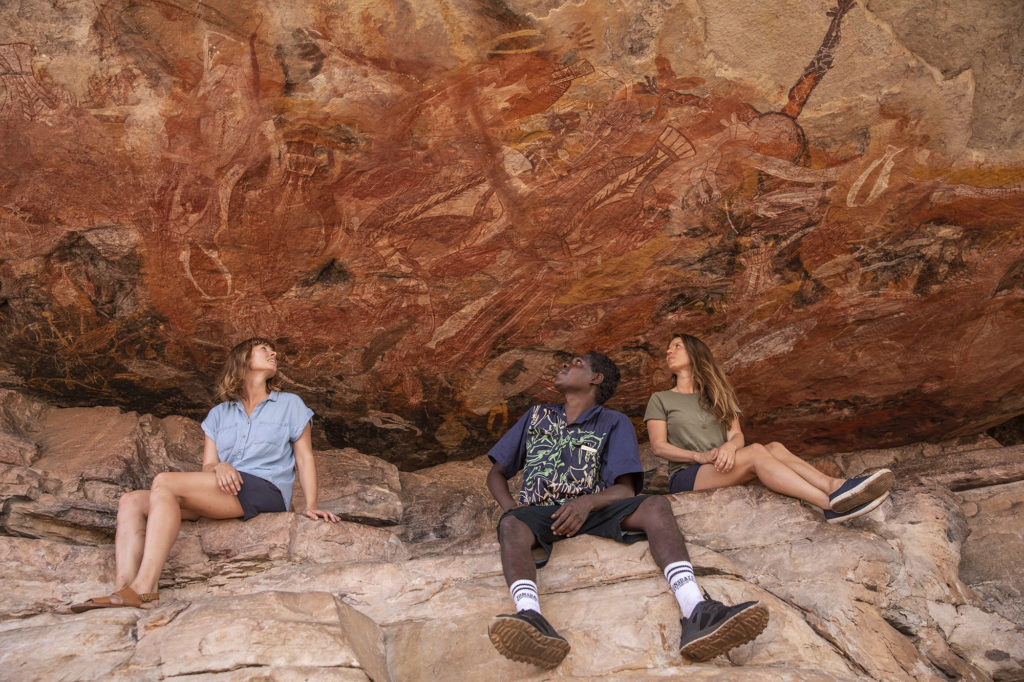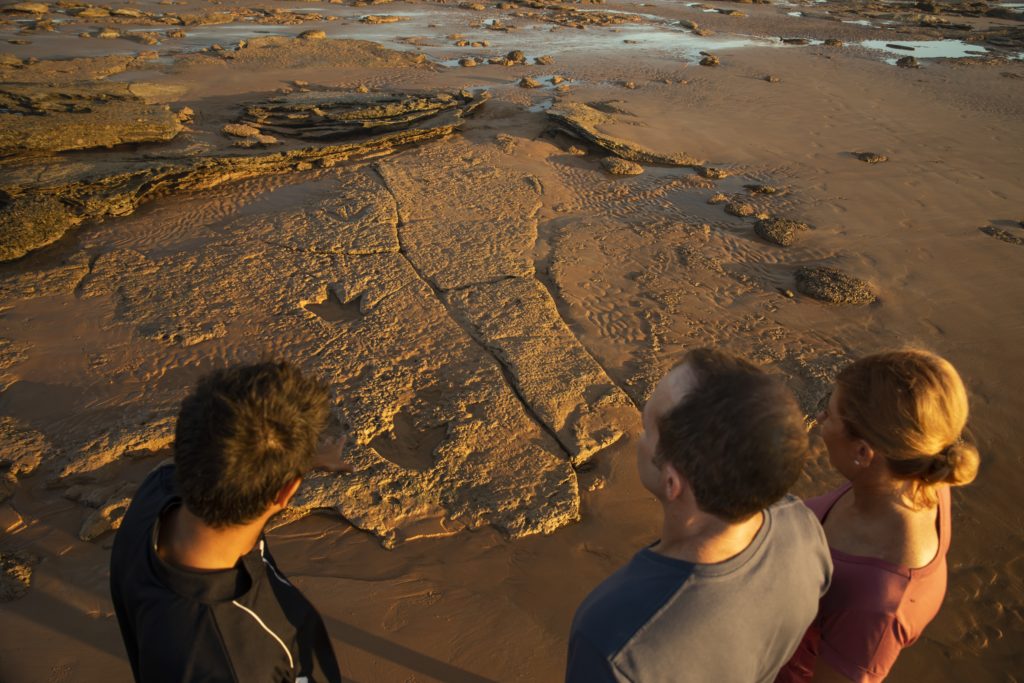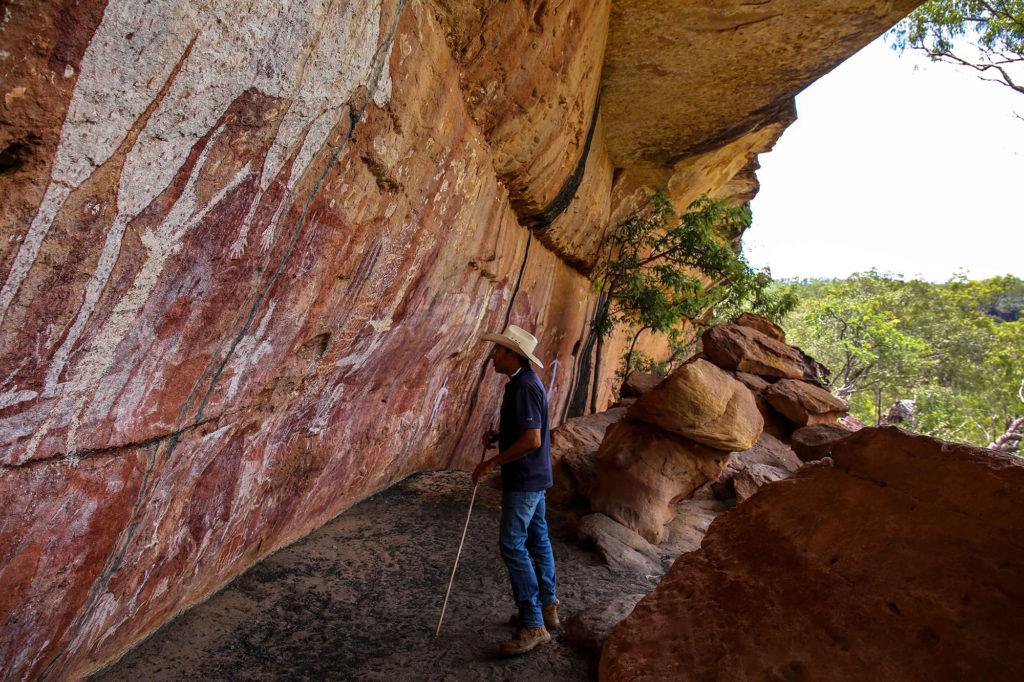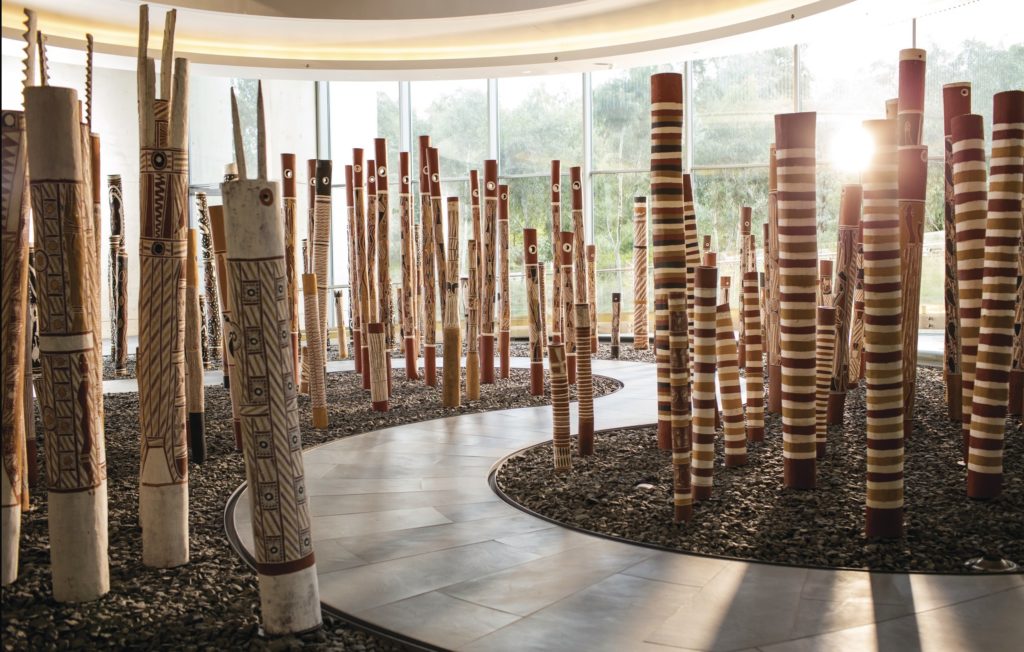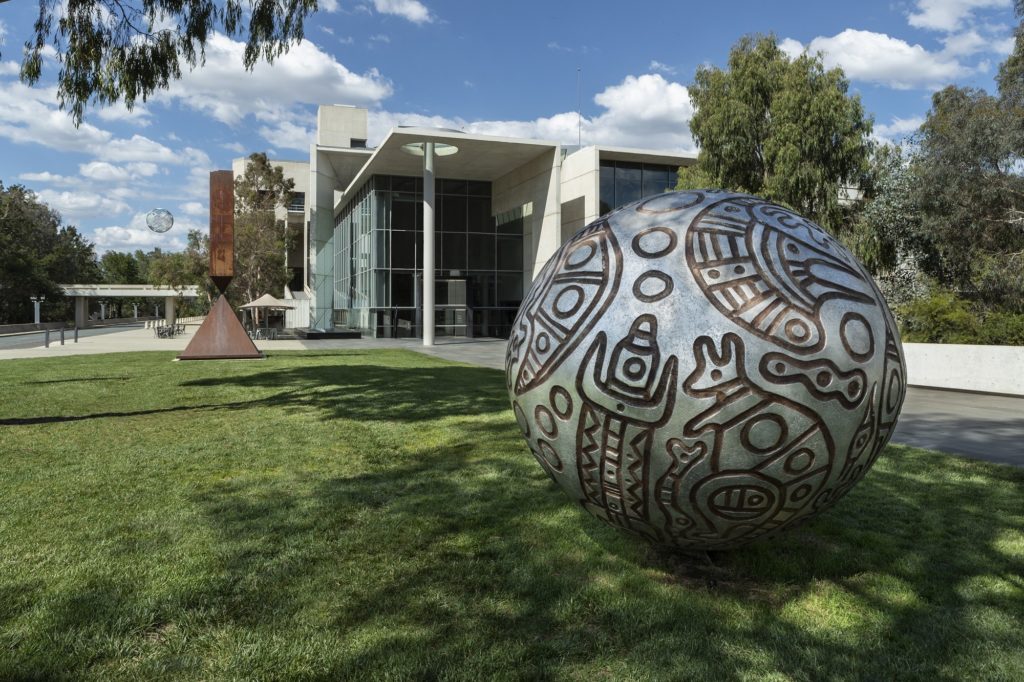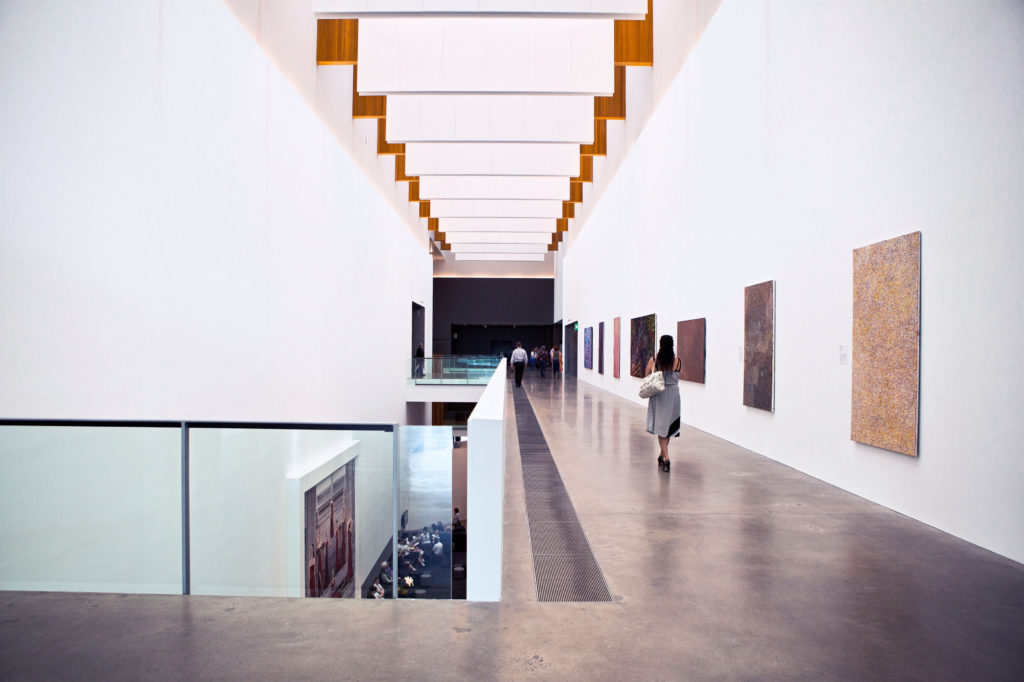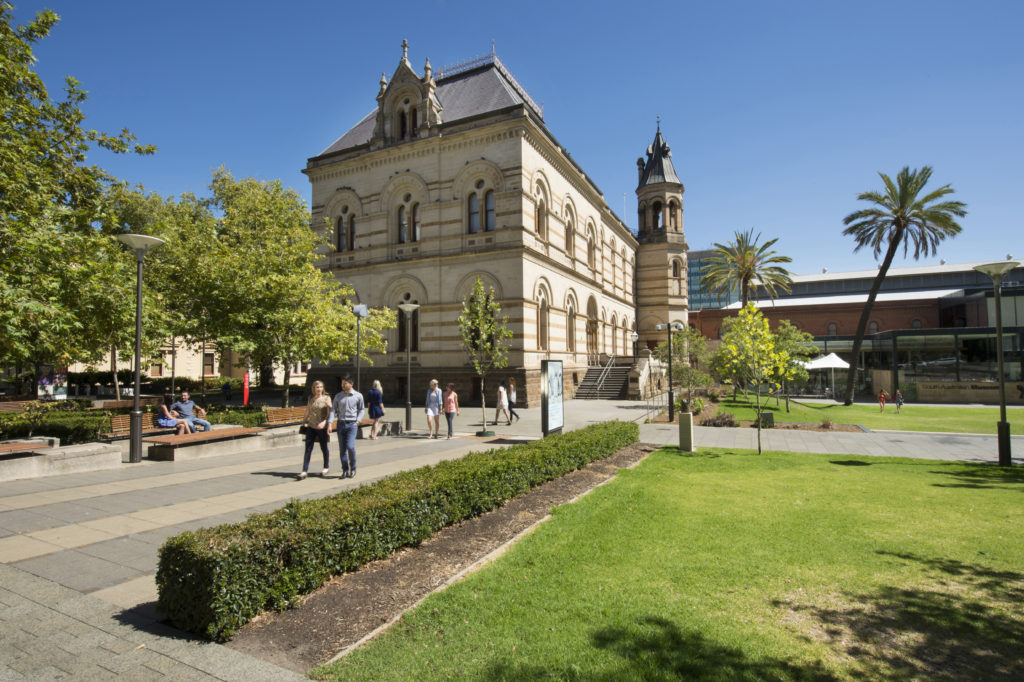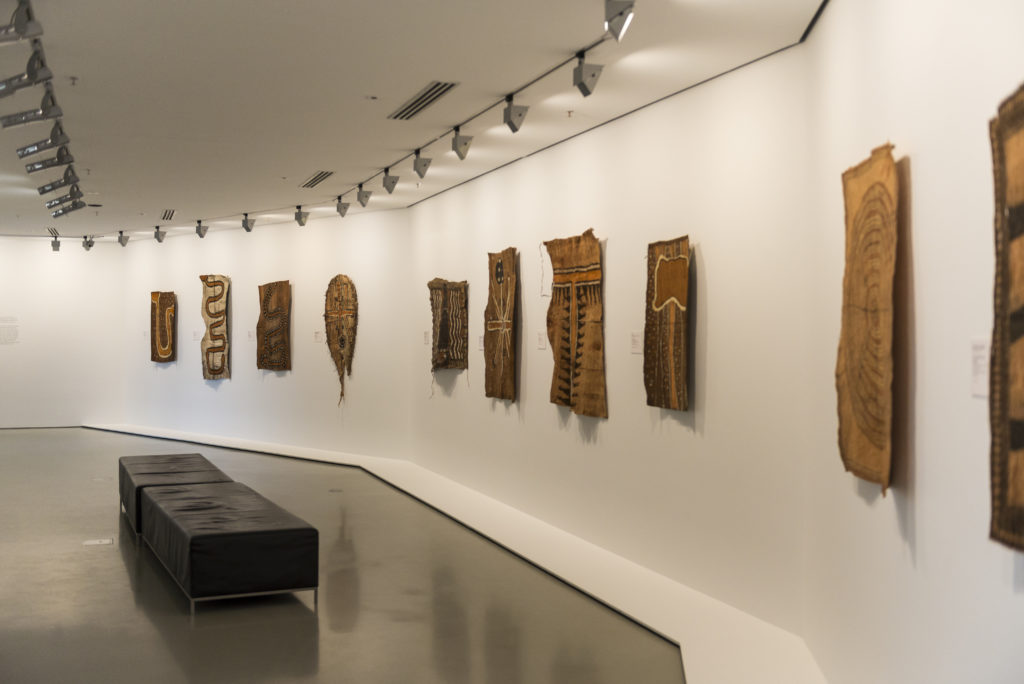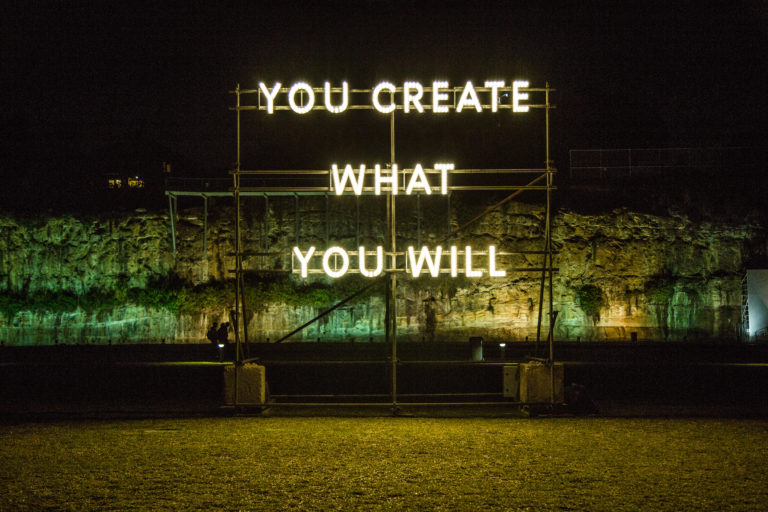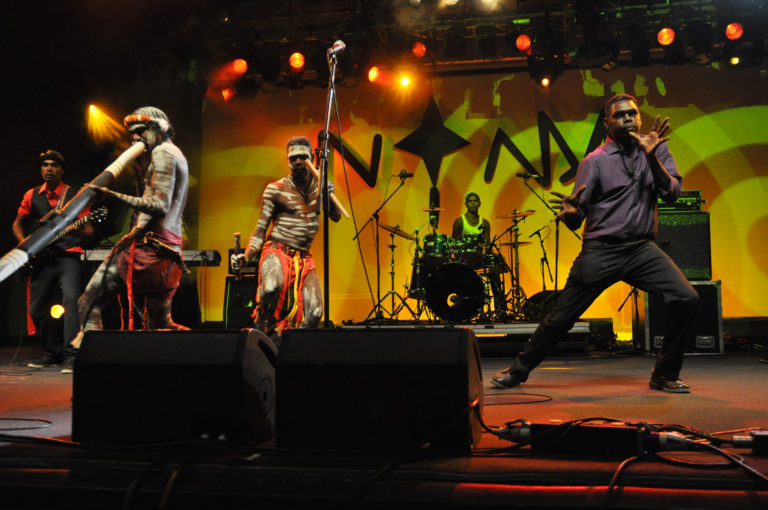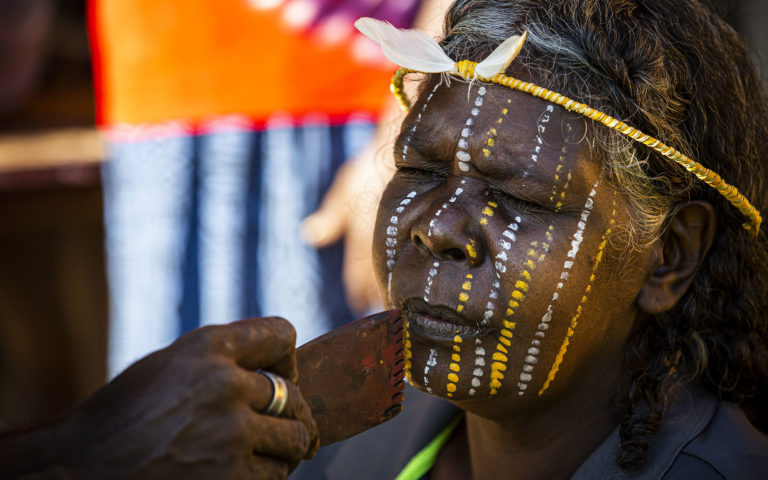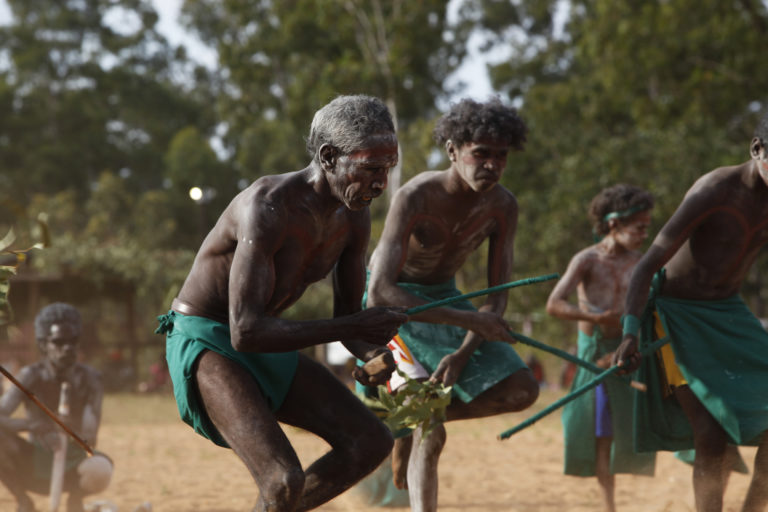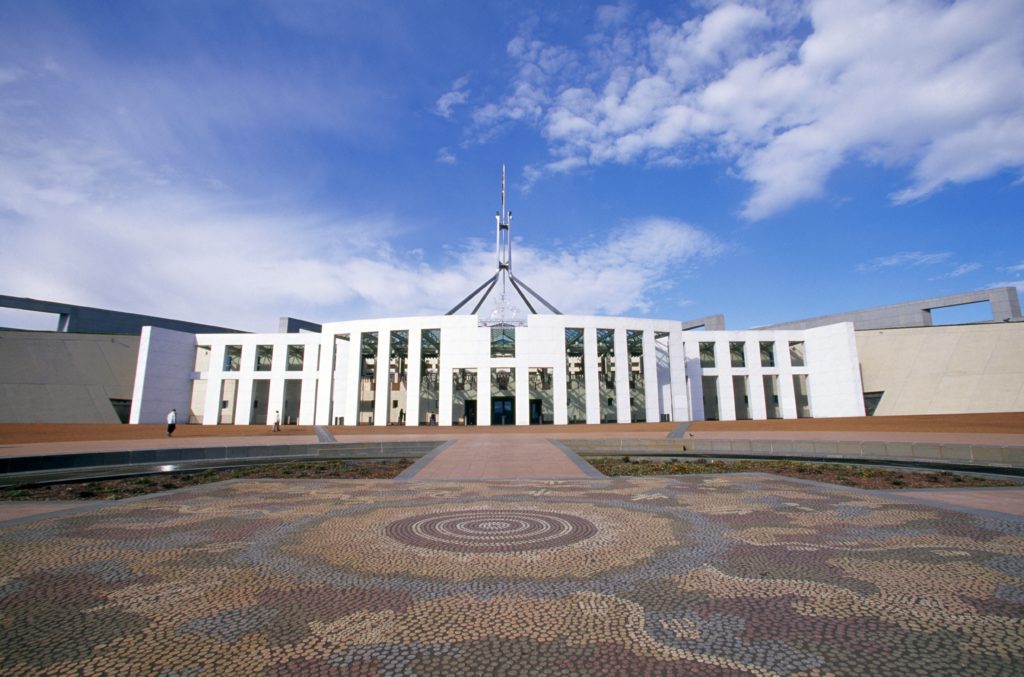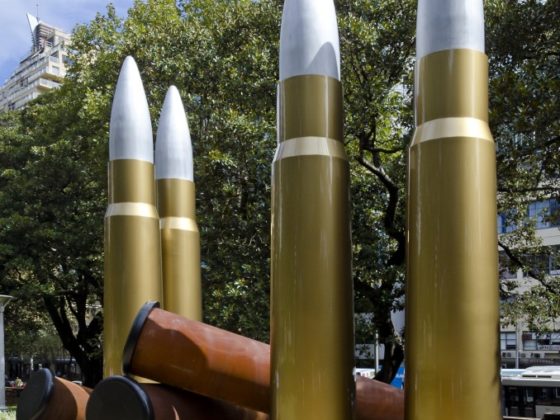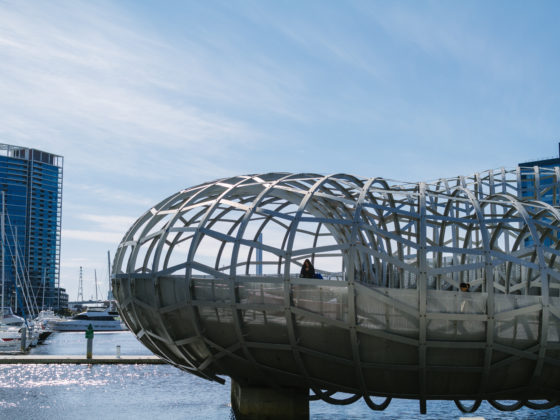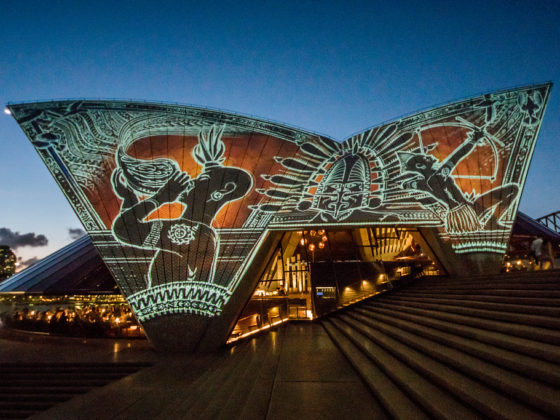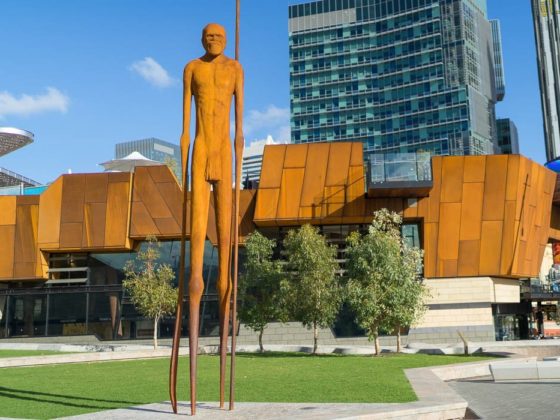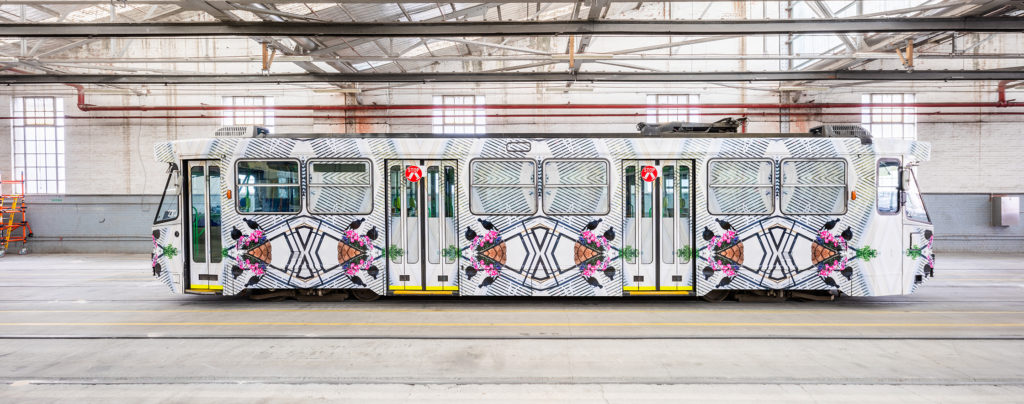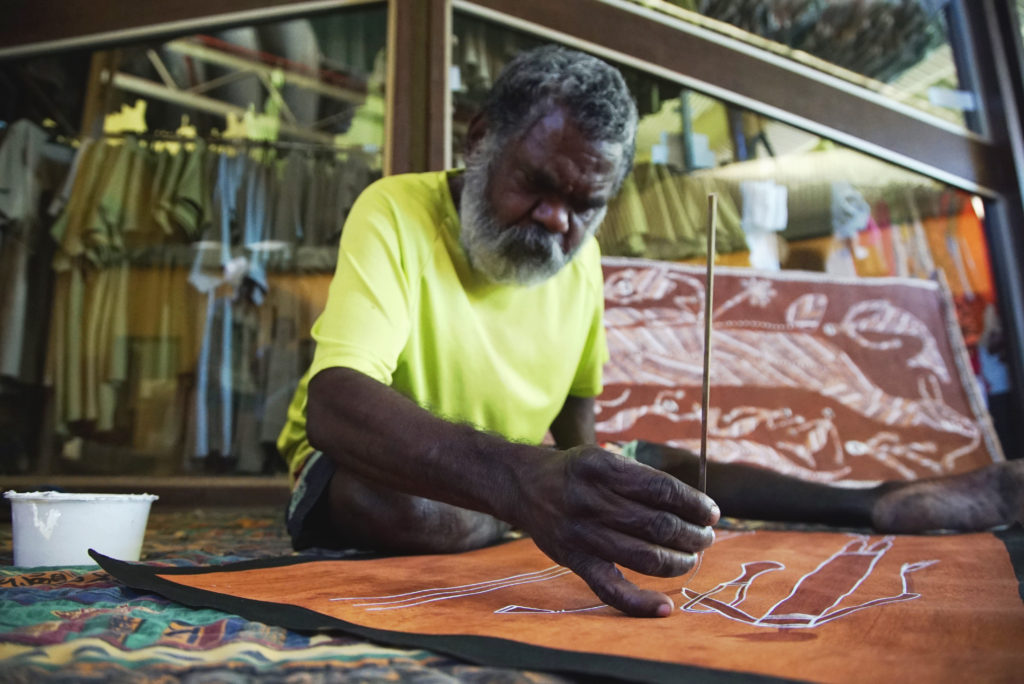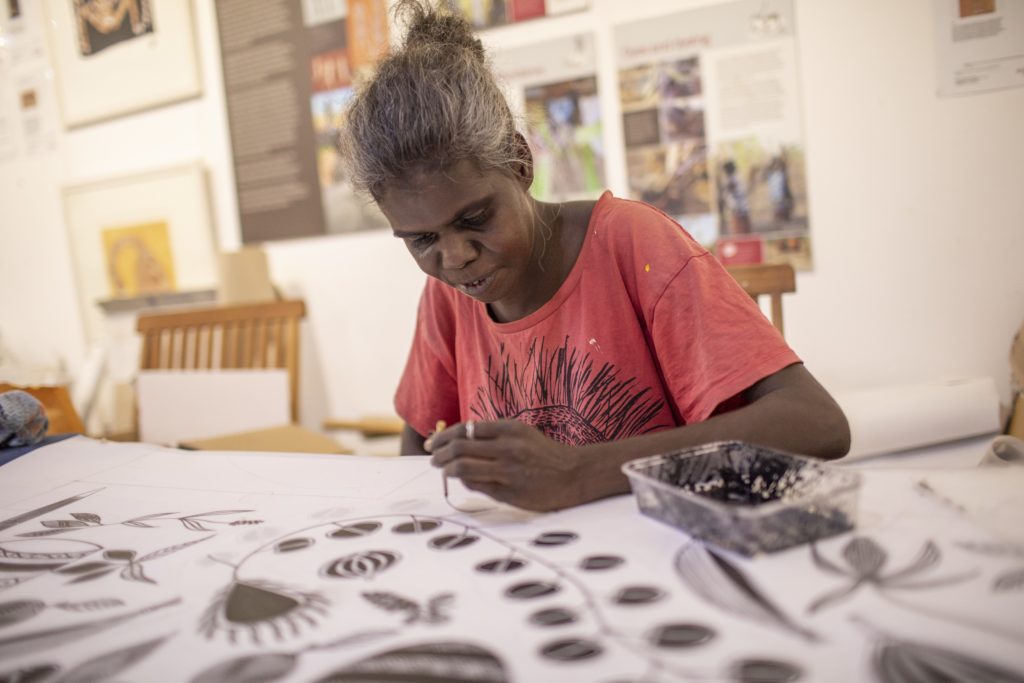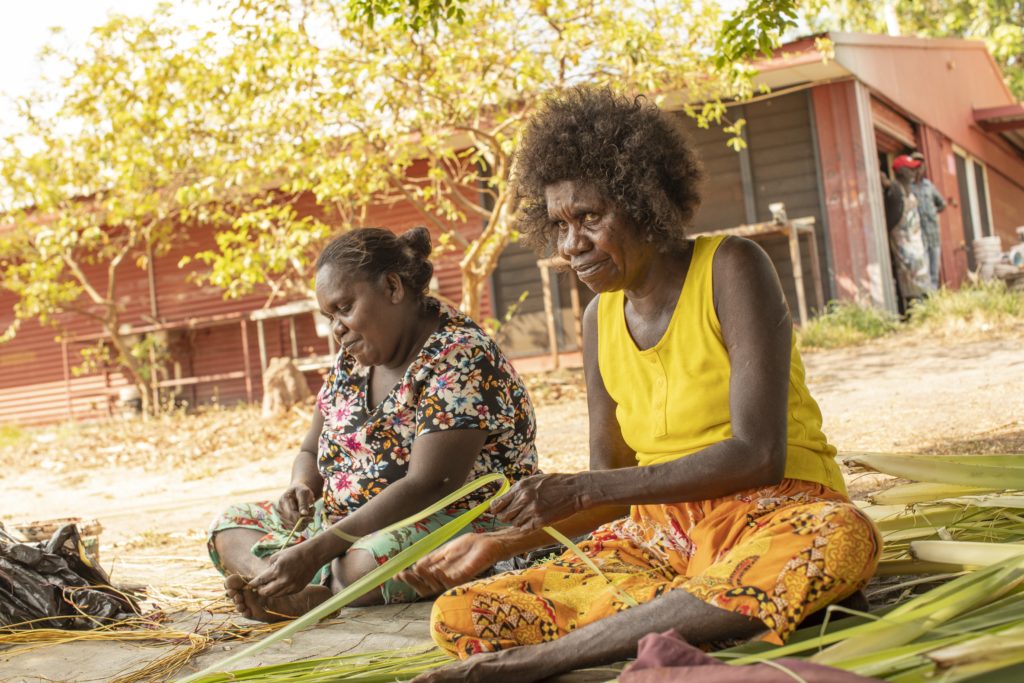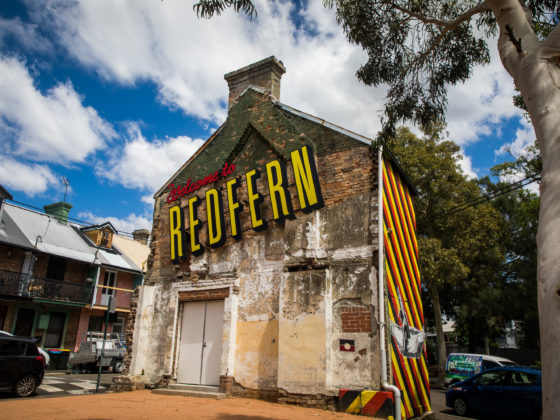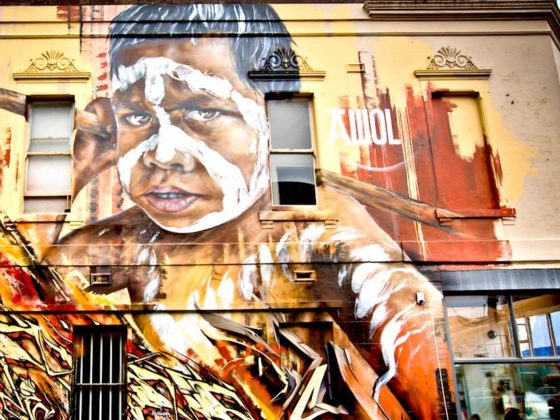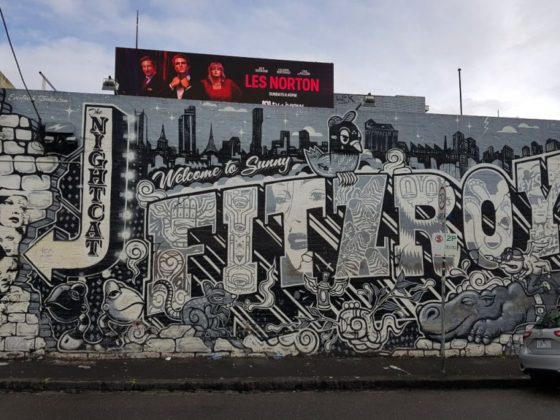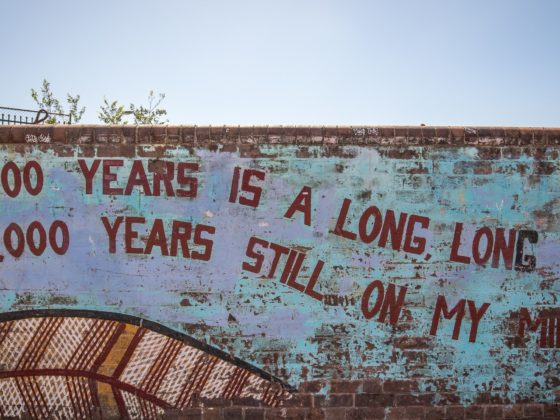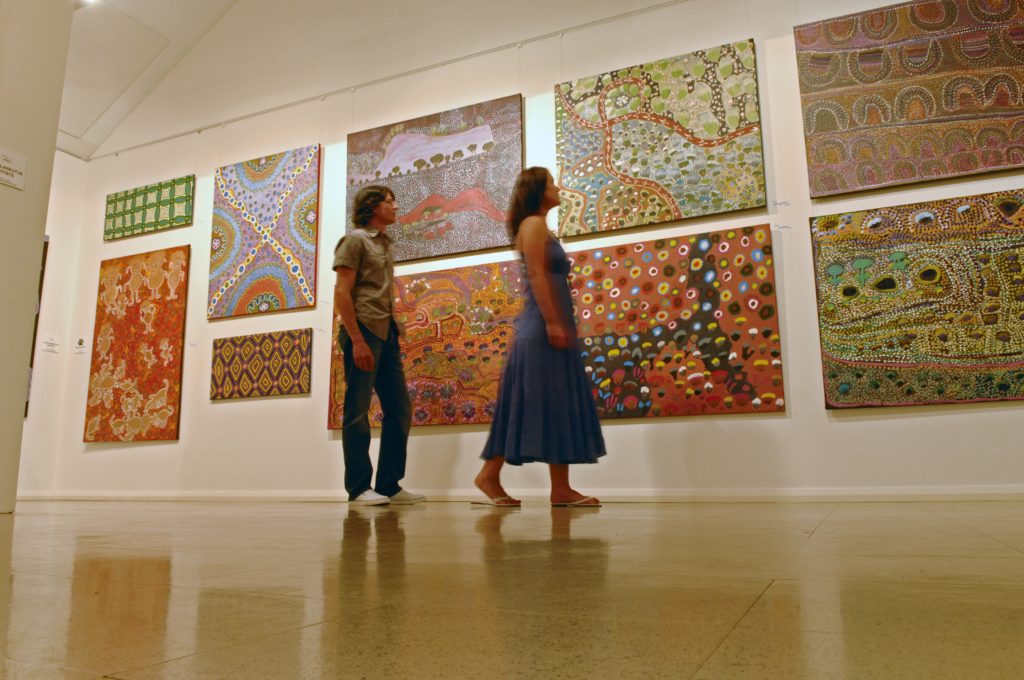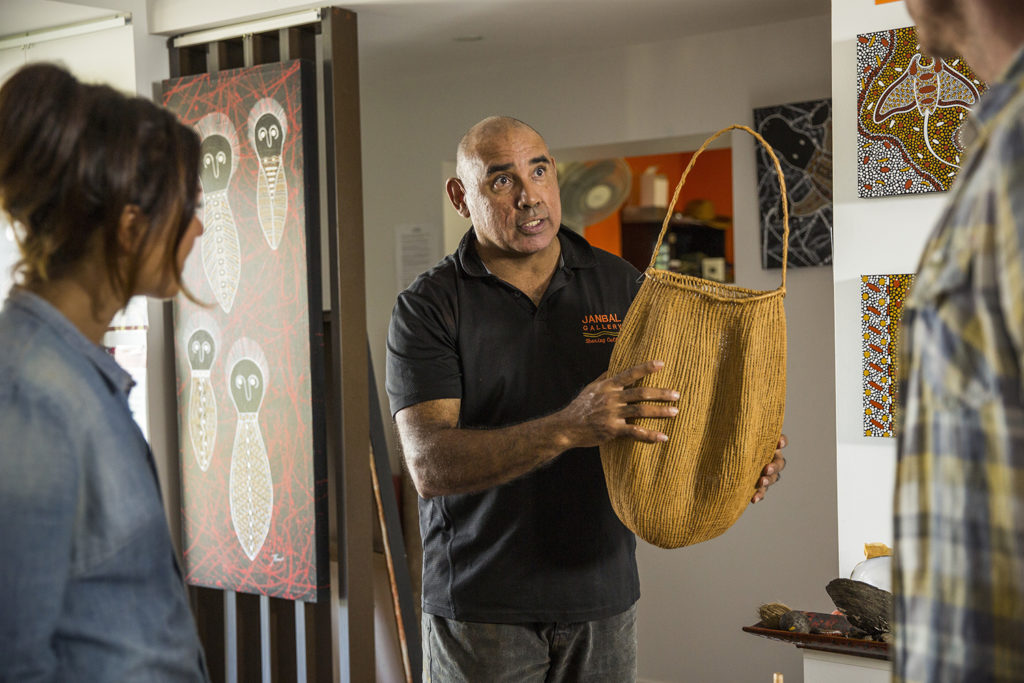9 Ways to Explore Indigenous Arts & Culture in Australia
This guide offers a curated selection of Indigenous arts & culture-imbued activities to help plan your travels around.
Our goal is to empower visitors to Australia to be attuned, pay respect, and ‘plug in’ to the ubiquitous imprint Aboriginal and Torres Strait Islander peoples’ ancient cultures have on the nation’s modern, multicultural society of today. Get inspired by these suggestions and work with us on customizing your journey!
With gratitude to Lauren Maupin, Education & Program Manager at the Kluge-Ruhe Aboriginal Art Collection, for collaborating on this resource!
Discover Country’s Significance with an Indigenous Guide
Seeking to be guided by a Traditional Owner on their Country is a powerful act of respect for First Nations’ peoples. It illuminates how this ancient culture, surviving against all odds across tens of thousands of years, continues to shape contemporary Australia.
“Country” refers to the collective elements of land, waterways, seas & skies that connect Indigenous people to specific places where their ancestors’ stories unfolded; where their own journeys began. Together with art, Country is so central to an Aboriginal person’s identity that they speak of being in a familial relationship to it. Country is alive; it speaks; it confers energy, history and meaning. This vital kinship connection imposes mutual responsibilities of care and stewardship.
As a visitor on Australian land, be it a built, urban environment, a bush, coastal, or outback setting, you are by definition on Country – one of the 300+ First Nations’ lands that blanketed the continent before colonization.
From city-based walking tours to multi-day immersions in remote National Parks (NPs), engaging with Indigenous guides on Country is a reciprocal giving experience. You will play an important role, empowering First Nations peoples to share stories, practice their traditions, and engage in their spirituality while earning income for their families and communities.
Time Travel with Rock Art
(Yes, it’s Art!)
With an estimated 100,000 rock art sites across the continent, there is no more powerful and palpable evidence of 60,000+ years of human occupation in Australia.
Seize opportunities to see petroglyph (engravings) and pictograph (pigment and ochres) outdoor galleries, depicting multiple worlds and epochs right up to modern times – creation stories and Dreamtime spirits, now-extinct animals and methods for hunting them, ceremony, and contact art illustrating European settlers. Styles vary across regions, from the X-ray representation of animals in Kakadu to the eerie Wanjina weather harbinger/gods of the Kimberley. Even today, descendants of generations of rock artists re-paint thousands-year old images to pay respect to ancestors and spirits inhabiting their lands, making this art form as contemporary in its practice as it is ancient in its origins.
Seven rock art sites in Australia hold National Heritage List status; some are of world renown for their size, scope, age or quality. Access them in far-flung remote sites, and also find amazing galleries not far outside major cities. You’ll never forget experiencing a rock art tour led, in many cases, by a descendant of original artists. Your guide will prompt you to attend to appropriate Indigenous protocols as you experience such sites, many of which are sacred.
Channel Your Inner Museum Geek
Put at least one major public art museum renowned for its Indigenous art or material culture collection on your must-do list. Choices abound: each capital city houses its state’s gallery of art; most have history museums as well.
The many forms and mediums of contemporary Aboriginal and Torres Strait Islander artistic expression are held in such high regard today across Australia that you can’t fail to encounter thought-provoking, curated showcase exhibitions, in addition to permanent collections, on your travels.
Don’t forget the burgeoning contemporary art museum/gallery scene, a natural home for First Nations work; as well as top university collections and impressive private and civic museums in regional centers & smaller cities across the country.
The ongoing assertion of Indigenous ancestral ties to Australia’s national identity through art is a fascinating theme to explore. Hint for timing museums visits: look for daily scheduled tours offered by indigenous curators & guides, as well as Welcome to Country ceremonies.
Find resources on public collections at IDAIA.
Arts Festivals are a Thing!
Arts and cultural festivals provide ideal gateway opportunities for directly engaging with Indigenous peoples and hearing their collective voices and stories.
Australia’s urban cultural calendars grow richer by the year with a panoply of Indigenous-curated arts fairs. Beyond the cities’ edges, cultural festivals on Country offer adventurous visitors a total immersion into land, spirituality, ceremony, dance, music, food and more.
Find yourself in Darwin during early August, when the Telstra NATSIAA awards coincide with the Darwin Aboriginal Art Fair and the National Indigenous Fashion awards. You can bookend these with Arnhem Land’s Garma festival on Yolngu Country to the east, then head southeast to Cairns International Arts Fair, known as the best showcase for Torres Strait Islanders art.
September features Alice Springs’ renowned Desert Mob exhibition, followed in October by Adelaide’s Tarnanthi festival. Interacting with and hearing from award-winning elder artists as well as younger emerging talents, you can develop your own personal tastes, and make purchases directly from the artists in support of their community cooperatives.
Don’t overlook international blockbuster events with significant Indigenous programming including the Sydney Biennale and annual Sydney Festival, Melbourne’s International Arts Festival, and Canberra’s National Indigenous Arts Triennial.
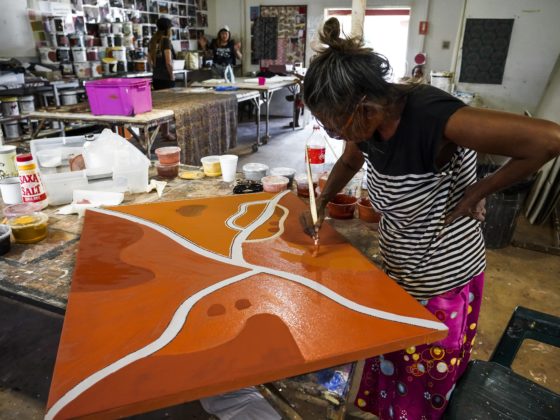
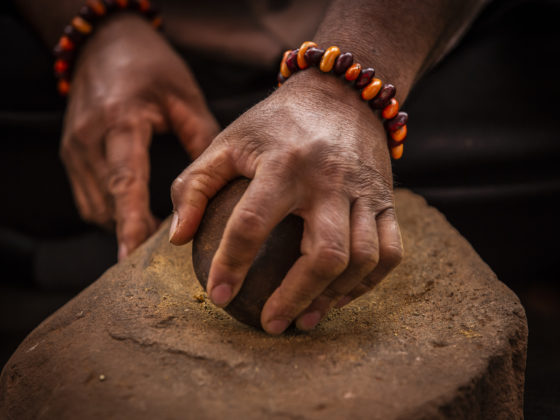
Hunt for Public Art
The ancient Indigenous imprint features ever-more prominently in design aspects of the evolving built urban environments across Australia’s major cities. It is fascinating to dial in to this presence as one meanders outdoor civic spaces and arts precincts that are major draws for visitors – Sydney’s Harbour foreshores, Melbourne’s Yarra (Birrarung) River, Brisbane’s Riverwalk and Wharf areas, Perth’s Yagan Square, to name a few.
Be it traditional large-scale sculptural commissions, statues, or murals that anchor parks, squares and government building grounds, the casual but visually-attuned visitor, prompted with a bit of research & hints on where to look, can experience stirring public art installations in myriad forms.
Many projects, undertaken as collaborative efforts with Indigenous and non-Indigenous partners, have become part of the fabric of ongoing reconciliation of the injustices of the colonial past.
Recent stunning examples of public art are on Sydney Harbour, site of the founding of colonial Australia, with daily sunset showings of Badu Gili (water light), an animated projection of Aboriginal and Torres Strait Islanders art on the eastern sails of the Sydney Opera House. Precede this with an afternoon stroll around Barangaroo, Sydney’s newest harbourside precinct; partake in Barangaroo Ngangamay, see the Shell Wall, and walk the lands used by the Gadigal peoples 6,000 years ago for fishing and hunting. In Melbourne, ride one of its iconic art trams adorned with Indigenous designs.
Meet an Indigenous Artist
Travels to the Red Centre or Top End enable you to meet artists in their homeland settings, where you’ll see dynamic works that will expand your horizons beyond the well-known “dot painting” associated with desert art.
Today dozens of arts centers, most located remotely (hundreds of kilometres from major cities) on First Nations lands, act as community hubs, empowering Indigenous peoples to live on and care for Country; to express and preserve culture through art creation; to earn income and build community infrastructure. A select few arts centers can be visited on day trips out of key cities. Permits to enter native lands are often required.
Notably, with 80% of Australia’s First Nations peoples living in metropolitan and regional centers, encounters with city-based artists pushing boundaries with diverse media such as glass, photography, sculpture, video, screenprinting, etc. are widely available through city-based ‘localling’ tours.
In urban settings, Indigenous-run arts cooperatives have long played community-centric roles as studios, collaborative spaces, exhibition and civic event gathering venues. When visiting these venues, drop all assumptions of what you imagine an Indigenous person looks or sounds like. First Nations-identifying artists are as diverse as the multicultural population of Australia itself, true jewels of knowledge and creative cultural expression hiding in plain sight, yet continually challenging historical narratives as they point the way to a more unified and reconciled future for all Australians.
Learn about Indigenous Environmental Stewardship
The intertwined nature of art and Country in the Aboriginal psyche is revealed when you accompany Indigenous rangers/guides on protected National Park lands and waters, and learn to read the ancient land and seascapes as they do as custodians. Living in deep connection and a sense of reciprocal care with the natural environment derives from the sense of being owned, or ‘mothered’, by the Earth itself.
Each Indigenous individual is connected to precise places on Country – the locations of their conception or birth – or events that impacted their ancestral community, or a Dreaming story of how the land features were created and shaped.
For generations First Nations peoples relied solely on the land for survival and expression of culture and spirituality, developing a land-care ethos that may be the oldest system of sustainability on Earth. Indeed, all Aboriginal material culture items and pre-contact expressions of visual art were derived from the land itself – sand paintings, rock engravings, ochred body painting for ceremony, bark shields and spears, hollow-log coffins, pandanus-woven utility items, shell jewelry. These practices and traditions continue today, in harmony with the regenerative nature of the land and the six seasons by which many First Nations peoples structure their lives and activities.
In many National Parks and sites now returned to and co-managed by Traditional Owners, you will encounter Indigenous rangers doubling as guides. Spend as much time as you can with these knowledge-keepers, entrusted by their own people and their government with conserving these environments and sacred sites. No one else is possessed of their rare combination of ancient, locally specific knowledge, modern science, and natural storytelling skills in sharing culture.
Stroll Neighborhoods with Rich Indigenous Connections
Australia’s major metro areas of today were originally inhabited by Indigenous peoples. Despite the destructive impact of contact, colonial settlement and displacement, many cultures survived, regaining strength as waves of Aboriginal peoples from rural areas migrated to cities in the mid-20th century.
Urban heritage walking trails focused on Aboriginal history are terrific self-guided experiences. You can dive deep into culture, commerce, ceremony, botanicals, and Indigenous foodways, as well as the dynamism of contemporary artistic expression in public spaces and galleries that dot these unique neighborhoods.
Sydney and Melbourne’s inner suburbs of Redfern and Fitzroy, respectively, evolved as hubs drawing Indigenous peoples seeking work, daily life and social, leisure/sports, artistic and political expression over many decades. These areas hold national significance in the history of struggles for recognition, native title, and civil rights, and contain key sites and markers worth seeking out. Magnificent works like Redfern’s recently restored “40,000 Years Mural” are vibrant examples of the ongoing reiteration of Indigenous art that is painted afresh by younger generations asserting ownership over their culture and heritage.
City websites offer access to heritage walk resources. In Sydney, check out the Barani walks on the Culture Walks app. In Melbourne, stop in at the Koorie Heritage Trust. In Adelaide, tap into the Kaurna Trail. Perth offers curated walks in Kings Park and at Elizabeth Quay. Wherever you find yourself, make a point of taking in the street art, the music, historic markers, and seek out Indigenous-owned and operated businesses in these areas for guidance, shopping, snacks/meals etc.
Buy an Indigenous Artwork
One can be easily overwhelmed with the range of Aboriginal (and Aboriginal-inspired) artworks, artefacts, musical instruments, decorative objects, material cultural items on offer. We advocate for the ethical purchase of only genuine/authentic Aboriginal-crafted items, whereby the greatest share of proceeds go directly to the artist, craftsperson and/or their community, which rely heavily on these sales for their livelihood.
Reliable outlets for ethical purchasing include community arts centers, reputable arts fairs and festivals, artists’ studios/cooperative spaces, commercial galleries, and certain marketplaces attached to Indigenous-managed lands and sites.
Not only can Aboriginal and Torres Strait Islander art pieces be highly priced & valued, more importantly, these works are tangible repositories of culture, clan knowledge and traditions, imbued with spirituality of the artist’s Country. Thus for both purchaser and artist, it is vitally important that communication, transparency and fairness guide a transaction, which from the standpoint of the artist, establishes a lasting connection between the two parties.
When considering purchasing a work of art, or authenticated objects intended as souvenirs, remember that ethical purchasing is an intentional act of respect for the world’s oldest continuing culture. It assures you of providing the most direct support possible to the artists and their community and contributes to the long-term sustainability of this uniquely Australian heritage and treasure.
The Indigenous Art Code, established in 2009 between hundreds of art dealers and artists, is the ‘gold standard’ for ethical purchasing. It is a set of rules and guidelines that art dealers commit to follow to ensure fair, honest and respectful treatment of Aboriginal and Torres Strait Islander artists, thus protecting them from exploitation. Work with a member to evaluate and purchase art / artefacts, and you’ll know you’ve bought ethically.
Remember: “Fake Art Harms Culture”. In your travels, become aware of and avoid outlets vending commercially produced goods that are made with non-traditional materials and feature inauthentic or culturally inappropriate designs. Where in doubt, ask questions about the provenance and documentation of items, the connection to the artist, and how the artist gets paid.
